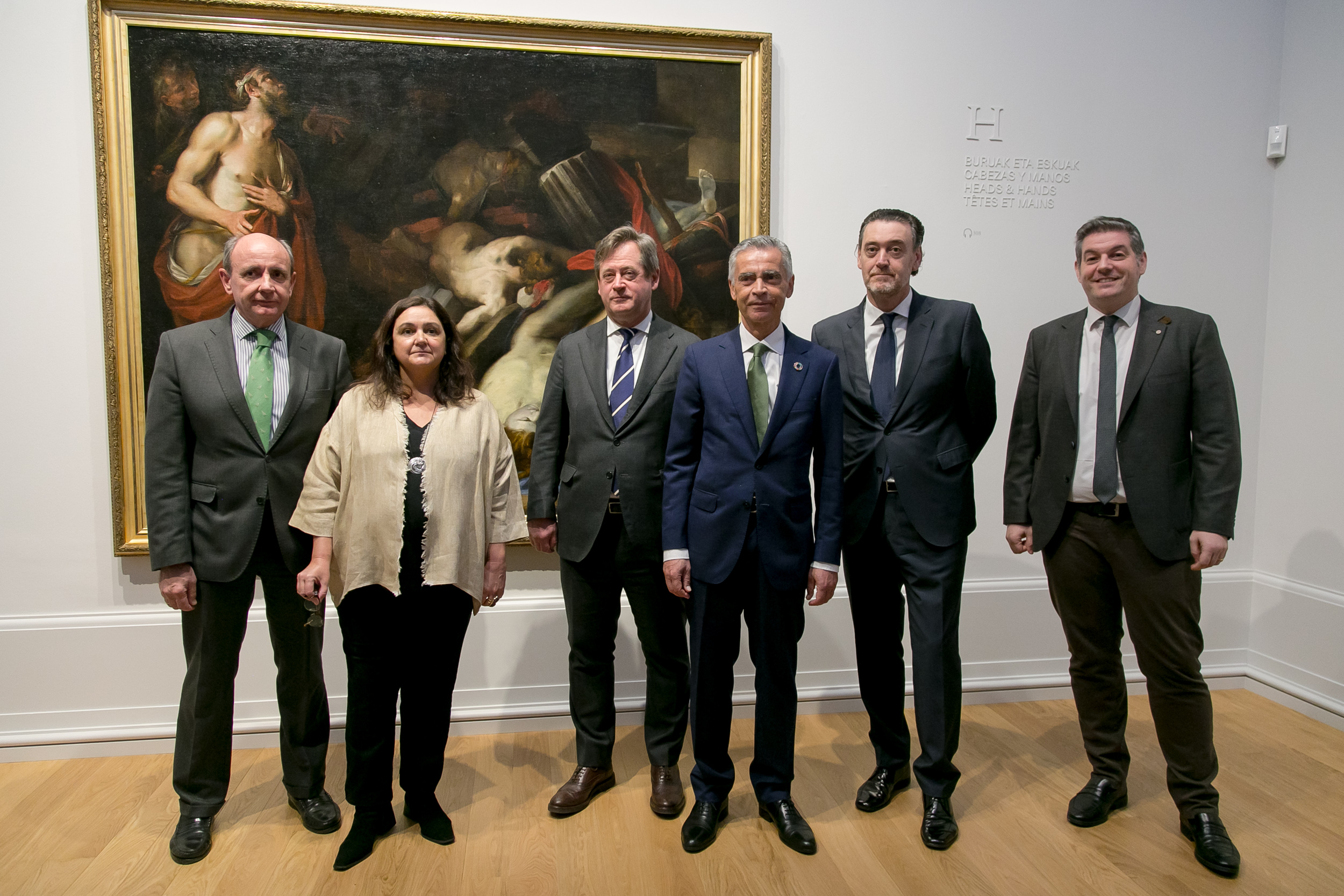Conservation and Restoration Programme Museo Bellas Artes de Bilbao
With the participation of: Fernando García Sánchez, Chairman of Fundación Iberdrola España; Ramón Castresana, Director of Fundación Iberdrola España; Rafael Orbegozo, Adviser to the Chairman of Iberdrola; Bingen Zupiria, Minister for Culture and Language Policy for the Basque Government and Chair of the Museum Trust; Miguel Zugaza, Director of the Bilbao Fine Arts Museum; Javier Novo, Conservation and Research Coordinator; and María José Ruiz-Ozaita, Head of the Museum’s Conservation and Research Department.
Iberdrola, which has sponsored the museum since 2001, supports one of the museum’s key missions: the conservation of its collection of artworks. To this end, works from the collection in need of conservation work have been selected every year since 2013, via the Iberdrola – Museum Conservation and Restoration Programme. In addition, in 2019 a new scheme was introduced for works to be featured in temporary exhibitions. As part of this scheme, one drawing and 22 oil paintings by Ignacio Zuloaga (1870-1945) underwent conservation work, including one of the most important works in the museum’s collection, the Portrait of the Countess Mathieu de Noailles (1913). In addition, 34 works on paper and 95 paintings by Isabel Baquedano, including Untitled (ca. 1972), from the series De la Belleza y lo Sagrado (On Beauty and the Sacred) were conserved. All were recently acquired by the museum. Lastly, a study of the underlying drawing on the Annunciation triptych by Joos van Cleve was also carried out. This work was loaned to the museum by the Santo Domingo de la Calzada Cathedral in La Rioja, as part of the programme entitled ‘La Obra Invitada’ (‘The Guest Work’).
One of the key works from the collection being displayed for the first time is by Mamerto Segui. The work was acquired in 2018 and means that the museum now has one of the most significant works of art by this Bilbao-born artist in its collections. In addition, it has expanded its collection of works by Regoyos, with the addition of a landscape donated in 2019. It will also display 24 mid-nineteenth century drawings by Roberto Laplaza, the last ones worked on as part of the conservation work to 112 drawings that began with the 2014 Iberdrola – Museum Programme.
In display order, the works conserved are: Portrait of the Painter’s Wife and his Son Ricardo (ca. 1918); Untitled (ca. 1972) by Isabel Baquedano; Portrait of the Countess Mathieu de Noailles (1913) by Ignacio Zuloaga; Job and his Children (ca. 1650) by Domenico Piola; Iron, Deposits (ca. 1900) by Darío de Regoyos; 38 drawings from the mid-nineteenth century by Roberto Laplaza, of which just a select few are on display; Zamacola Dictating to his Scribes (1881) by Mamerto Segui; Portrait of Stéphane Mallarmé (1891) by Paul Gauguin; Musicians (ca. 1620-1623) by Pieter Fransz de Grebber; and Souk in Tangier (ca. 1912) by Francisco Iturrino.
The conservation work undertaken (consolidation of the paintwork and canvases, treatment of the surface layers, chromatic reintegration and mounting) has improved the condition of the works. In addition, technical analyses (studies of the underlying drawing using infrared reflectography and X-ray and ultraviolet light radiography) have revealed extremely useful information, both for defining the type of work to be undertaken, and for gaining a more in-depth understanding of the works and their artists.

